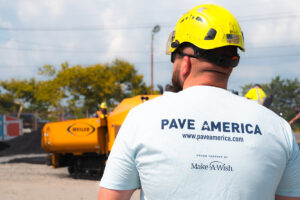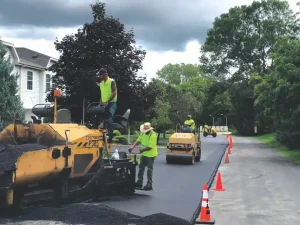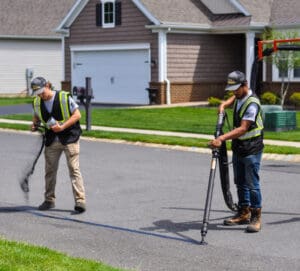Roads are the lifelines of a community, facilitating the movement of people and goods. But like any infrastructure, they are susceptible to wear and tear over time. Regular maintenance is crucial to ensure the safety and functionality of our roadways. One such vital maintenance procedure is asphalt milling and resurfacing, a two-step process that addresses both the structural integrity and aesthetic appeal of asphalt surfaces. Let’s take a closer look at this process.
Deterioration of Asphalt Surfaces
Exposure to weather, constant traffic flow, and overloading can cause asphalt to crack, become uneven, and lose its traction. These issues not only create an unpleasant driving experience but also pose significant safety hazards. Pooled water on uneven surfaces can lead to hydroplaning, a situation where tires lose contact with the road, causing a loss of control. Additionally, cracks can widen and become potholes, further compromising safety and damaging vehicles.
Asphalt Milling: A Targeted Approach
Asphalt milling, also known as cold planing, is a precise process that removes the deteriorated top layer of the asphalt pavement. A large milling machine with rotating cutting heads grinds down the asphalt to a predetermined depth. This targeted removal addresses the specific areas that require the most attention, minimizing waste and preserving the underlying pavement structure.
Benefits of Milling
Milling offers several advantages over complete pavement removal and replacement. It’s a more cost-effective solution, as it utilizes the existing substructure. In addition, milling creates a clean and level surface for the new asphalt layer to adhere to, promoting a longer lifespan for the resurfaced pavement. The process is also environmentally friendly, as the milled asphalt can often be recycled and used in new paving mixes, reducing the need for virgin materials.
Resurfacing: A New Lease on Life
Once the milling process is complete, the next step is the application of a new layer of asphalt, commonly referred to as resurfacing. This fresh layer restores the structural integrity of the pavement, providing a smooth and even driving surface. The resurfacing process typically involves applying a tack coat, a thin layer of asphalt emulsion that acts as a bonding agent between the old and new surfaces. Following this, hot-mix asphalt is laid down using a paving machine and then compacted with heavy rollers to ensure proper density and stability.
Advantages of Resurfacing
Resurfacing offers numerous benefits beyond simply creating a smoother ride. It significantly improves drainage, allowing water to flow off the surface efficiently and reducing the risk of hydroplaning. A properly resurfaced road also enhances nighttime visibility due to the increased reflectivity of the new asphalt, leading to a decrease in traffic accidents.
Get Asphalt Milling and Resurfacing Services from the Experts at Pro-Pave!
At Pro-Pave Incorporated, we have a team of experts adequately equipped to handle your paving project. No matter what your vision may be, or what kind of materials you want to use, we have the skills and expertise needed to do the job right.
For more information about our approach to repairing potholes, call us directly at 703-433-9500 or fill out our contact form today!



